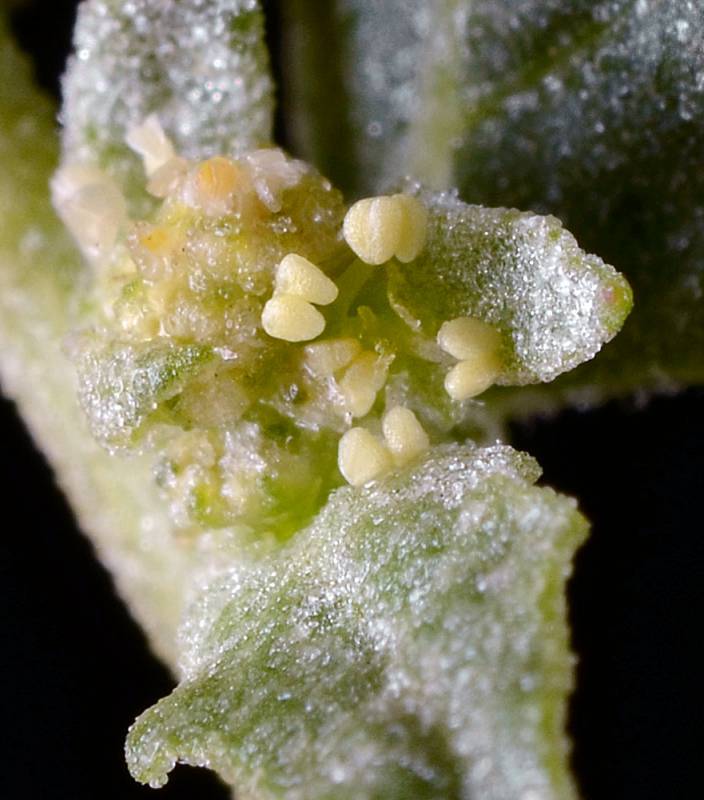Atriplex obovata
Atriplex rosea
red orach, tumbling orach
Leaves alternate, petiolate or the upper sessile, lanceolate to ovate, 2-5 cm. long, the blades wavy-dentate and often slightly hastate, tapered or rounded at the base.
Flowers glomerate in the leaf axils and on short axillary and terminal spikes, the staminate above the pistillate; staminate flowers with a 5-parted perianth; pistillate flowers without a perianth, with 2 subtending bracts which are fused less than half their length, triangular or nearly orbicular, strongly flattened, 4-8 mm. long, acute at the tip, the margins dentate, the sides with sharp projections.
Utricle
Atriplex obovata
Atriplex rosea
Occurring east of the Cascades crest in Washington; British Columbia to California, east to the Rocky Mountains and Great Plains; also in scattered locations in central and eastern U.S.
- Local floras:
BC,
CA,
OR,
WA
- Local Web sites:
CalFlora,
CalPhotos,
Flora NW,
PNW Herbaria
WildflowerSearch
iNaturalist (observations)
USDA Plants Database
- LBJ Wildflower Center
- SEINet
- Plants of the World Online
- Encyclopedia of Life
- Wikipedia
- Google Image Search


